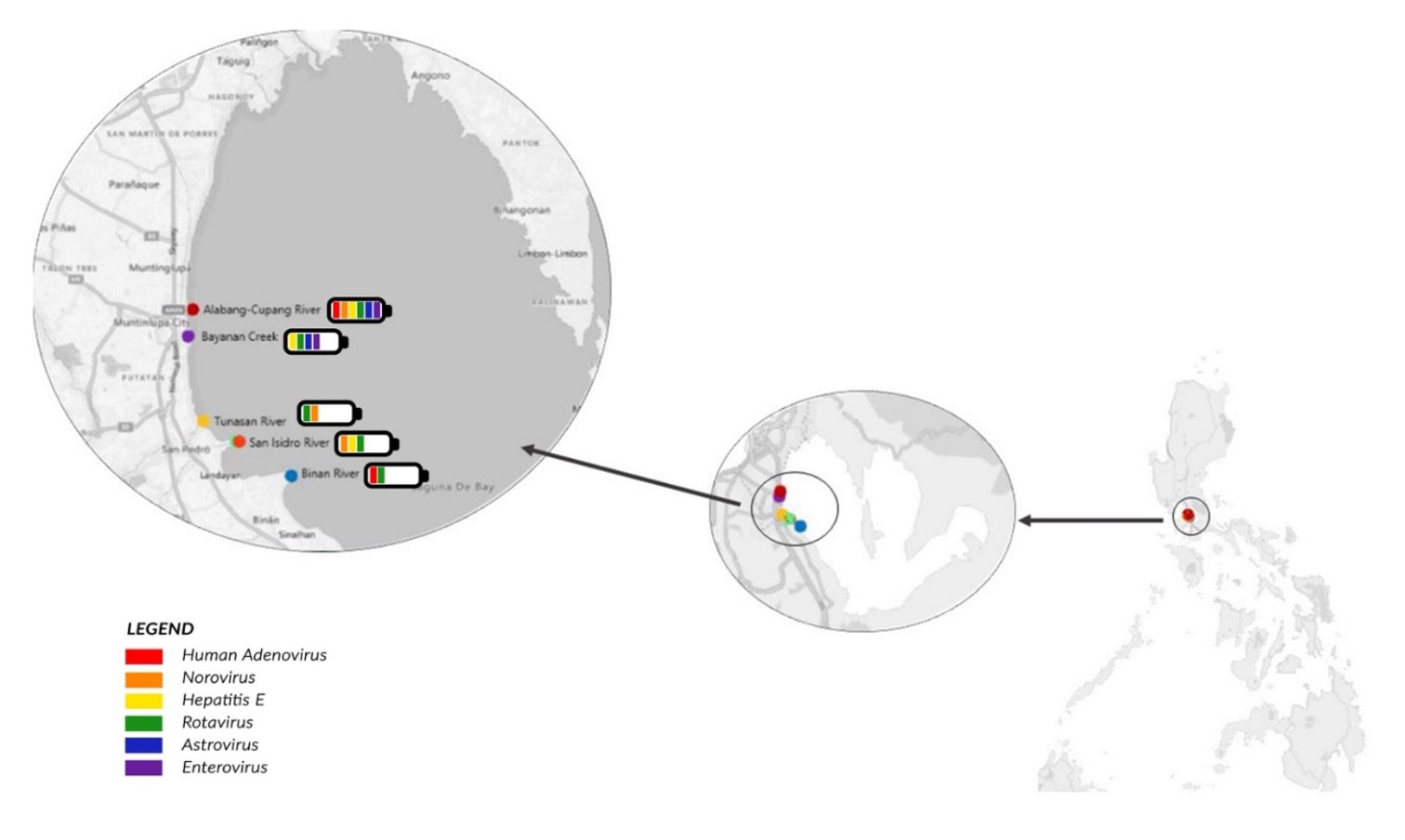VOLUME 14 (Supplement)

Philipp. Sci. Lett. 2021 14 (Supplement) 010-015
available online: June 22, 2021
*Corresponding author
Email Address: wlrivera@science.upd.edu.ph
Date received: 13 January 2021
Date revised: 10 May 2021
Date accepted: 20 May 2021
ARTICLE
Detection of enteric viruses in five important tributaries of Laguna Lake, Philippines by PCR assays
Research Laboratory, Institute of Biology,
College of Science, University of the Philippines Diliman,
Quezon City 1101, Philippines
2Biological Research and Services Laboratory,
Natural Sciences Research Institute,
University of the Philippines Diliman,
Quezon City 1101, Philippines
3Manila HealthTek, Inc., Marikina City 1800, Philippines
4Institute of Molecular Biology and Biotechnology,
National Institutes of Health,
University of the Philippines Manila,
City of Manila 1000, Philippines
Fecal contamination of water sources caused by humans and animals presents public health risks due to the presence of pathogens. Enteric viruses are important waterborne pathogens since their occurrence in contaminated water is subsequently linked to outbreaks. However, detection of these viruses is not routinely done in water quality analyses, and there is a paucity of reports on the surveillance of these pathogens. Hence establishing a baseline data for these viruses is of utmost importance. Water samples from five important tributaries of Laguna Lake in the Philippines were collected to detect the presence of human adenoviruses, noroviruses, hepatitis E and A, and rotaviruses. Samples were processed via double filtration method using 0.45 µm and 0.2 µm nitrocellulose membrane filters. Viral DNA were extracted from the 0.22 µm membranes using commercially available DNA extraction kit before doing polymerase chain reaction (PCR) assays. Real-time PCR assays showed that human adenoviruses, noroviruses, Hepatitis E, rotaviruses, astroviruses, and enteroviruses were found in the tributaries. Phylogenetic analyses of the identified adenoviruses and astroviruses revealed that they were of human origin indicating human sources of contamination in the lake. A simple filtration method coupled with a real-time PCR assay can be used to detect common enteric viruses in water samples. Identifying the sources of fecal contamination in bodies of water will contribute to an efficient risk assessment of environmental systems.
© 2025 SciEnggJ
Philippine-American Academy of Science and Engineering